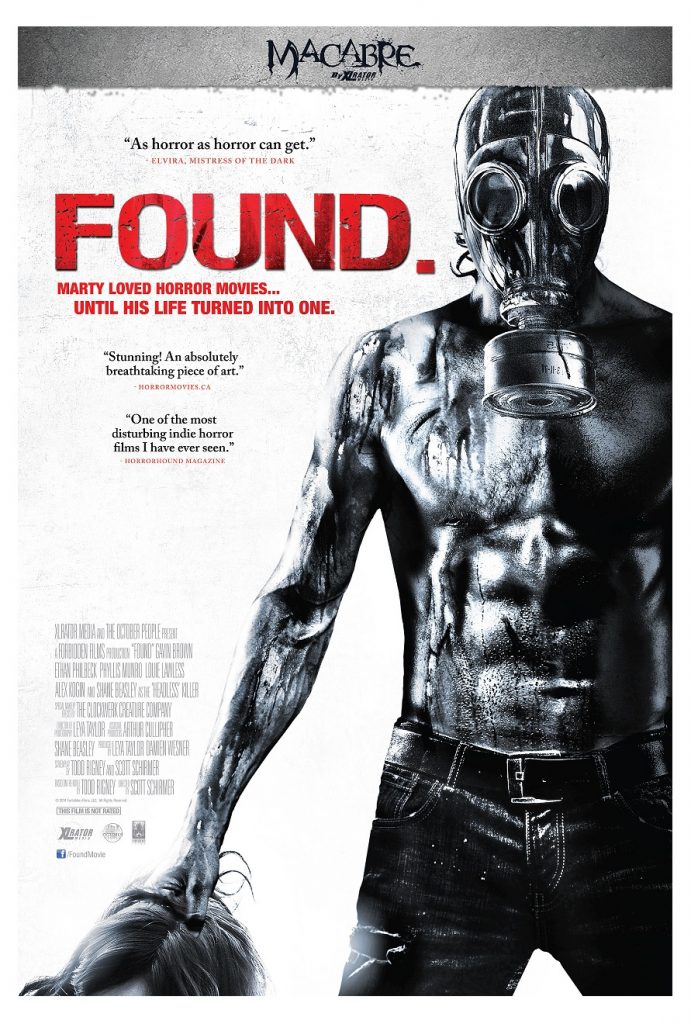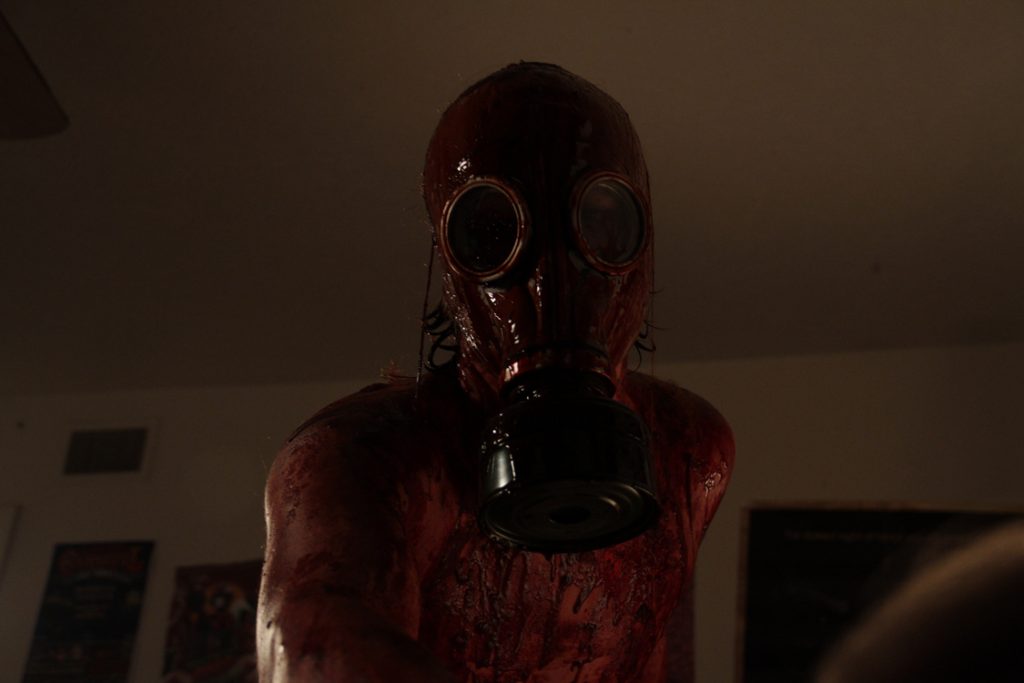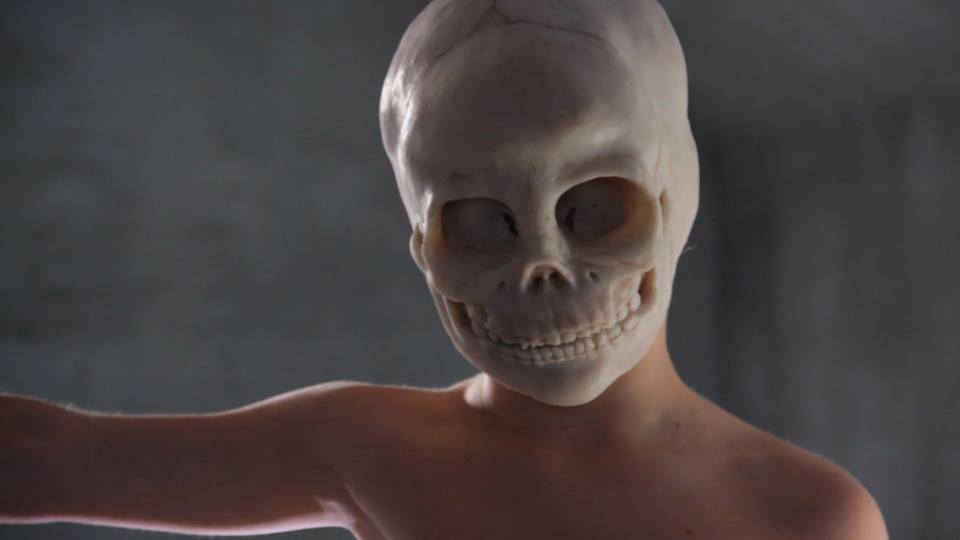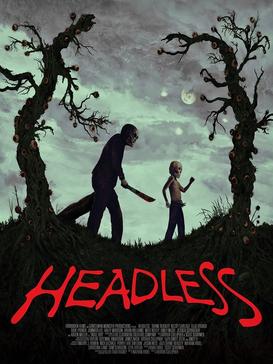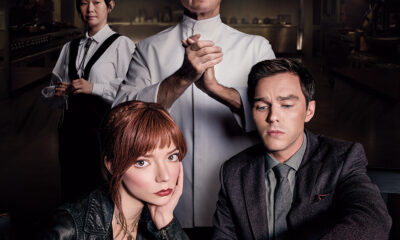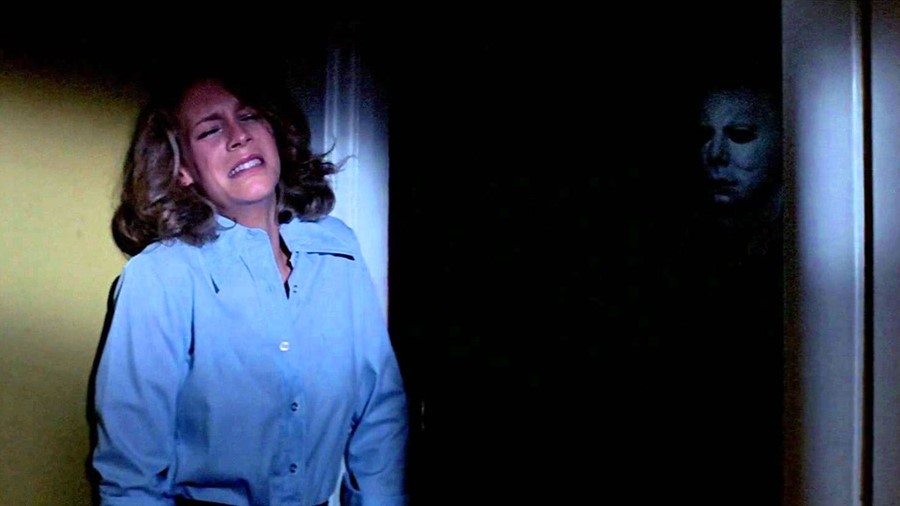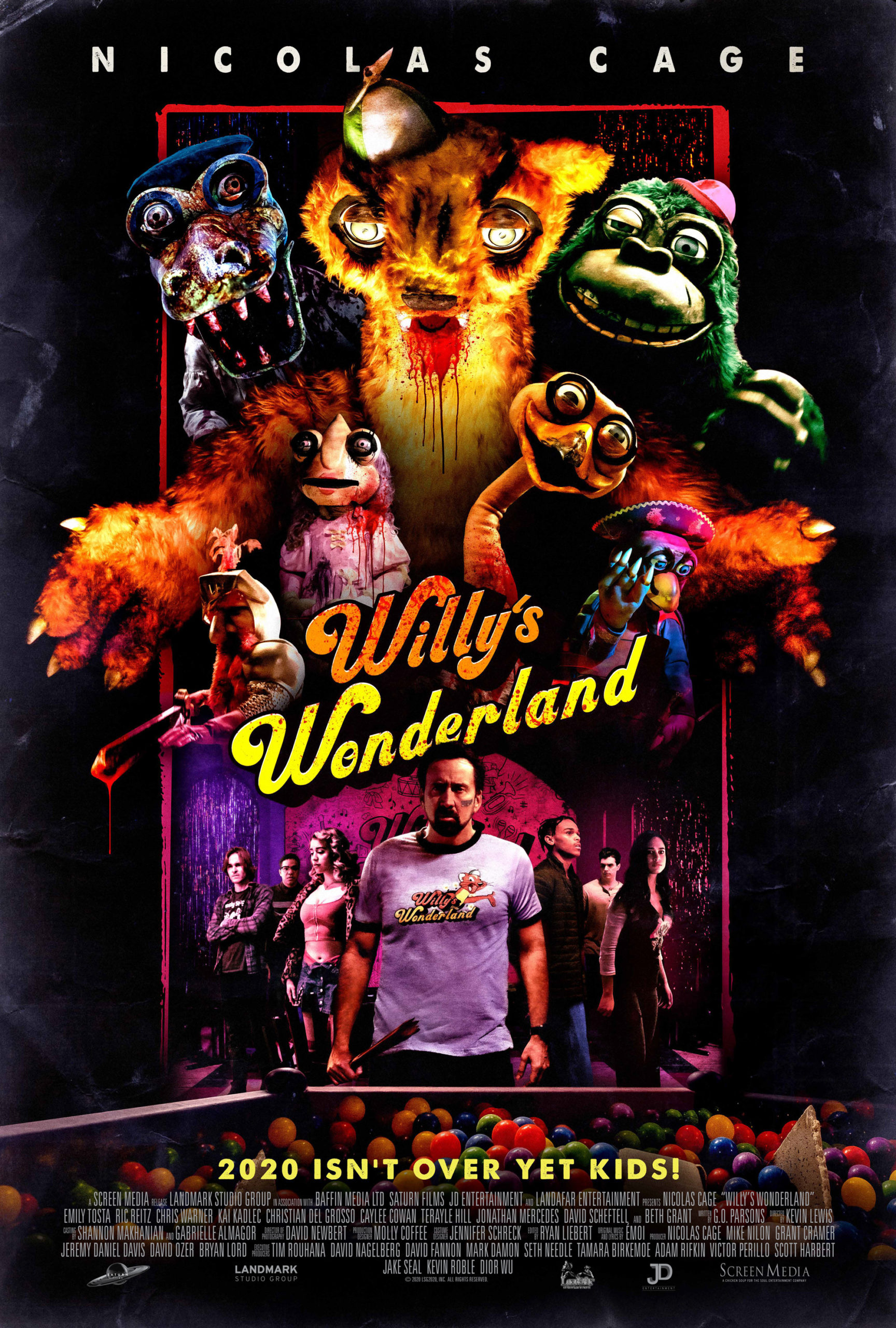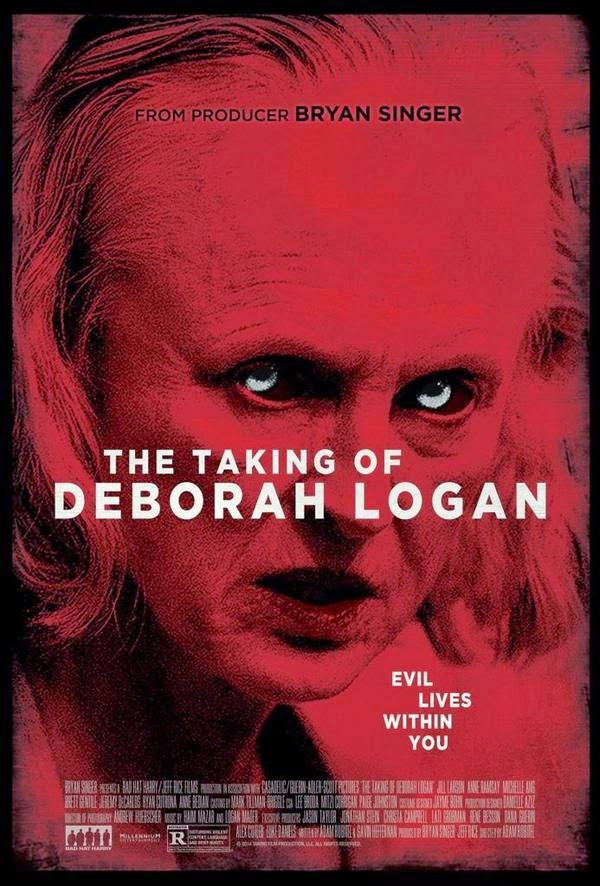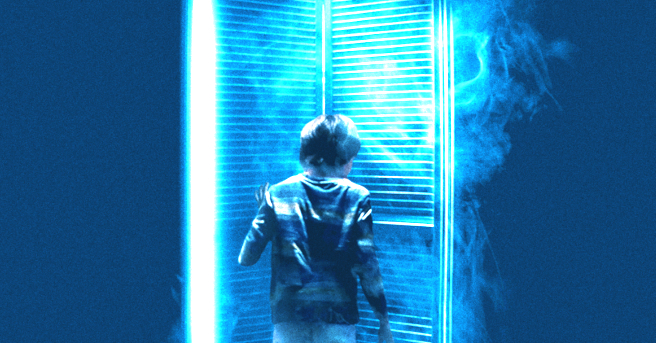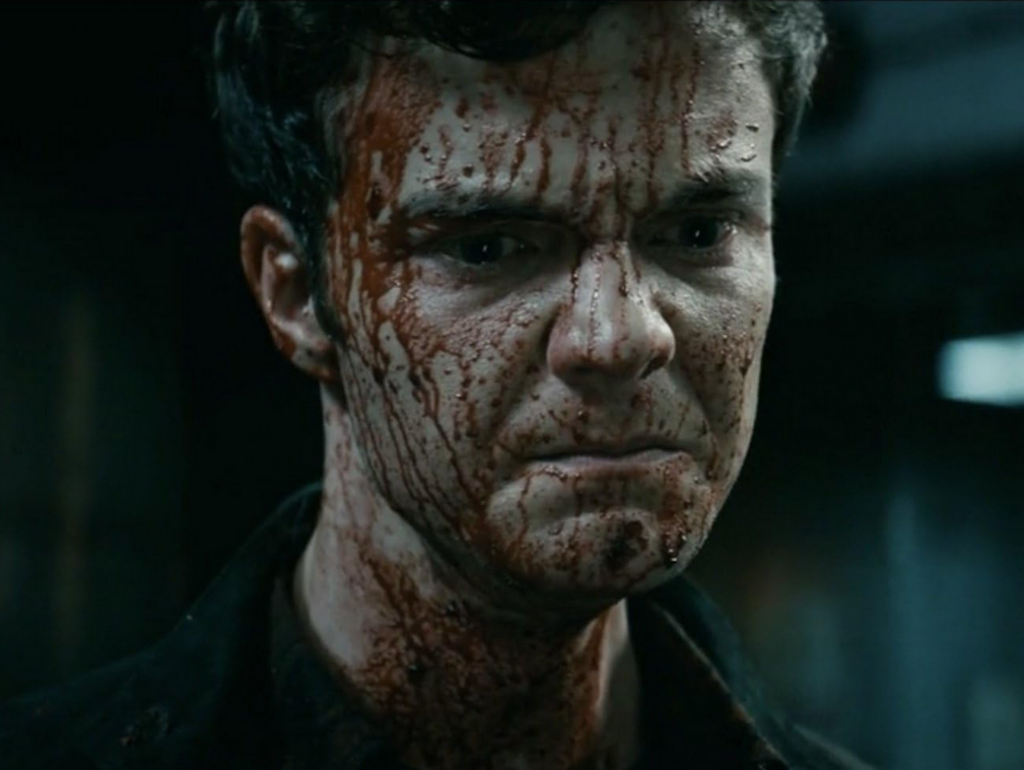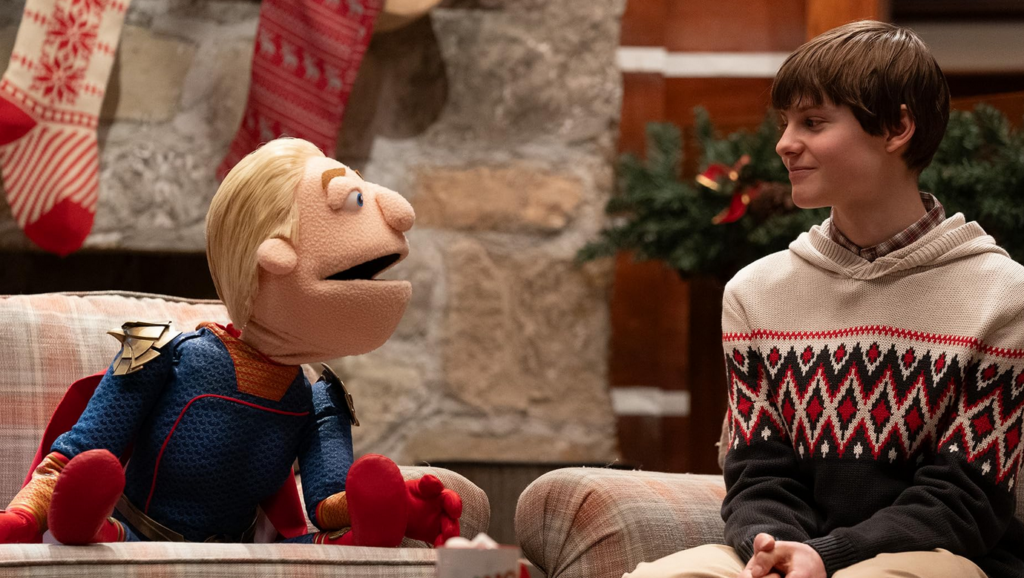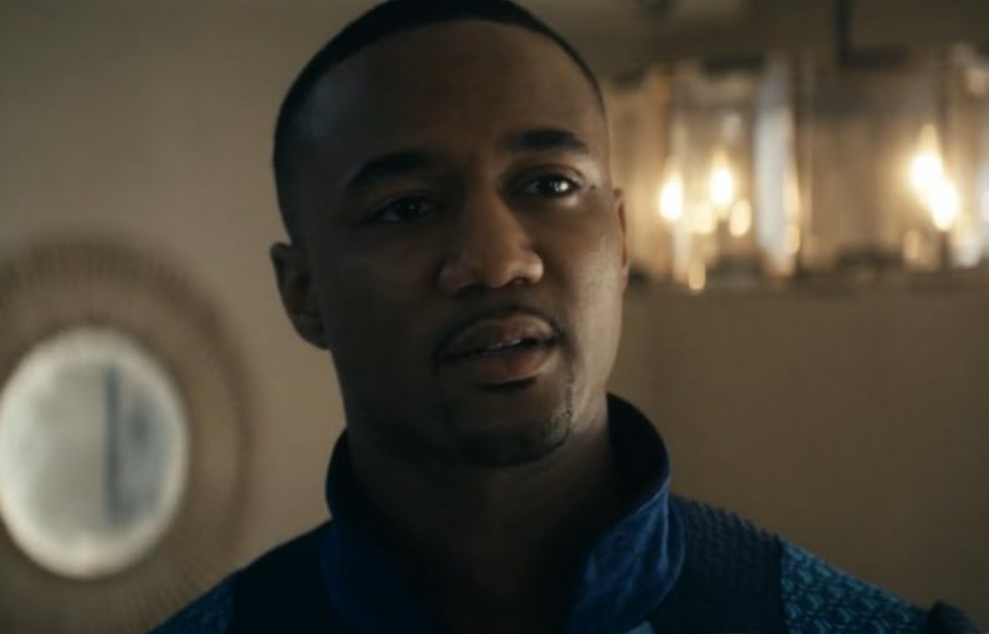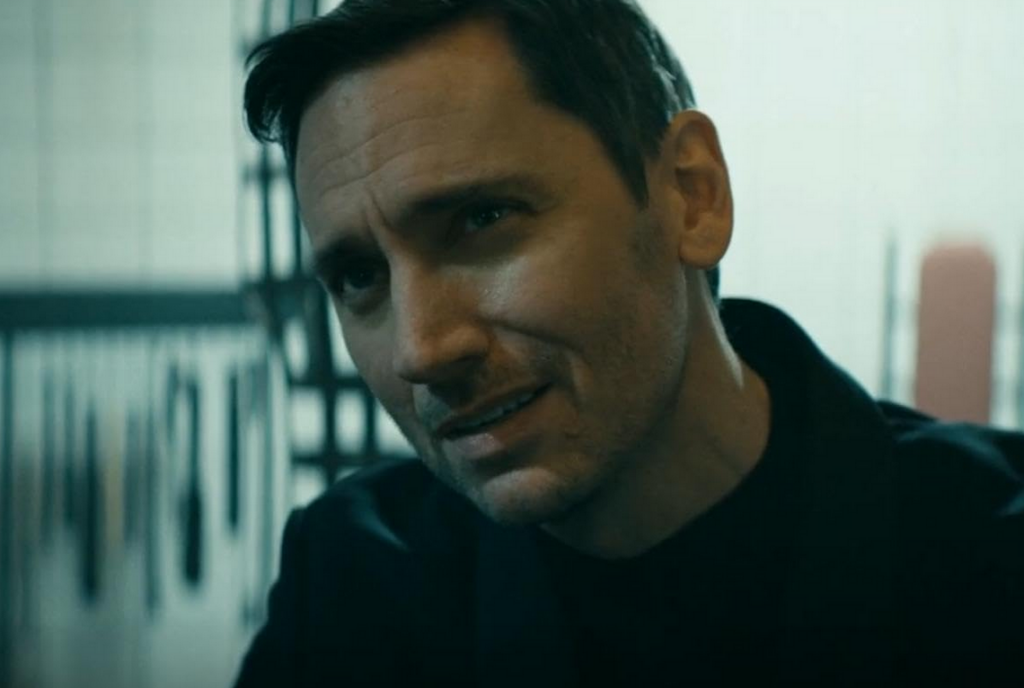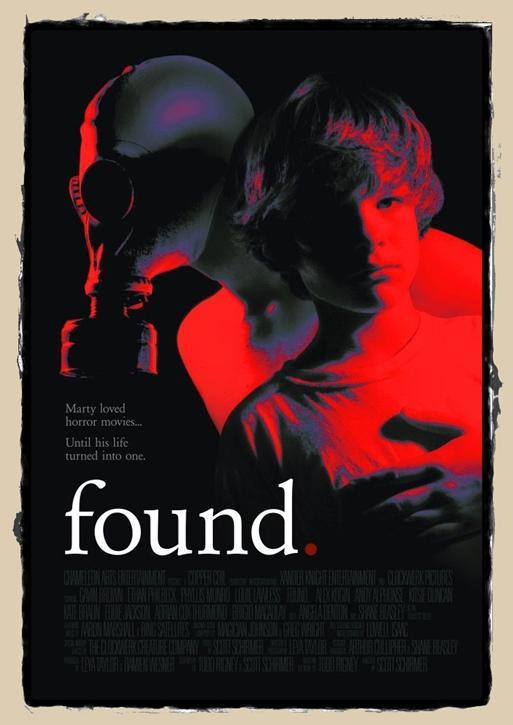
‘Found’ (2012): uncovering an underground gem and its bloody spin-off
More Videos
Published
4 years agoon
By
Rachel Roth
Disturbing, gritty, and at times gross, it’s a new take on the serial killer. Based on the novel by Todd Rigney, who also penned the screenplay, and directed by Scott Schirmer on a budget of just $8,000, Found is a film that takes the story of a serial killer and shows it from a different perspective. A child’s perspective to be exact. Marty is a shy kid that keeps to himself, his life seems pretty normal until he discovers a severed head in his brother’s room. That’s right, a severed head just sitting in a bowling bag in his brother’s room. The shocking part is, he’s not too concerned about it. The opening line, words that grip you from the start in their cold, dead hands, says it all; “my brother keeps a human head in his closet.” Tells you everything you need to know. There are two brothers, one keeps heads in his closet and the other is…kind of okay with it.
It’s not just one head though. His brother Steve has actually killed many people. He just switches the head out every few days. Usually, it’s black women and he often rips their hair out. Wearing his mother’s best kitchen gloves (she washes the dishes with those things man!), Marty studies these heads with morbid curiosity as if they’re just yet another shocking treasure a kid might find in his older brother’s bedroom. No different than porn, pot, or wannabe Satanic paraphernalia purchased from Hot Topic.
Marty may be willing to keep brother’s murderous secrets, but he’s not entirely accepting of it, or I guess I should say, comfortable with it. That changes, however, once he realizes the power it gives him. A power he struggles with. He starts looking at everything differently. A victim of relentless bullying, Marty lives like a mouse in a world of wolves. The brothers have a strange relationship that seems distant at times and codependent at others. As their relationship strengthens, the darker Marty becomes, and the more resilient he becomes toward his tormentors, viewing violence as the ultimate weapon against his own personal institutes of oppression.
It’s more than just a story about a kid who finds out his brother is a serial killer though. As I said before, it shows the mind of a serial killer from a different perspective, removing us completely from their viewpoint. There comes a point in the film where Steve reveals why he kills but the reason that he gives is clearly a lie. It may be what he tells himself, an explanation he’s made his personalized excuse, but in reality, Steve doesn’t have an answer, even he seems mystified when questioned. He’s aroused at the notion of inflicting pain but is either unaware of this or incapable of grasping the concept as fact.
Found shows the total lack of self-awareness that resides in the psychopath. Even they don’t always know why they do what they do, they just do it.

I’m going to be frank here and say that I believe the film to be slightly incestuous. The taboo theme appears twice, one in a more obvious context but it lingers very faintly throughout the film. It can be interpreted in any way one wishes but I feel that Steve’s borderline infatuation with his brother, especially near the end, crosses a certain line. However, it’s impossible to know what’s really going on in Steve’s head because everything is seen from Marty’s perspective. It’s both a strength and weakness of the film. Steve remains a huge question mark in the end. He seems to be a living contradiction when it comes to emotion; an angry teen who draws pleasure from pain but falls apart at the mere sight of his brother’s tears.
Found is layers on top of layers and like Rachel Green’s abominable English Trifle, there’s a meaty surprise inside. There is both a cultural and a psychological frame of mind presented with a large chunk dedicated to toxic masculinity. It is surprisingly well-rounded. Don’t look at the cover and write it off as another exploitive horror movie, it’s more psychological than anything else.
At its core, Found is a disturbing coming of age film that doubles as a study of the psychopath. It details the struggles of a boy coming into manhood, and the dangers of seeing his psychotic older brother, a stand-in for hypermasculinity, as someone to revere. My only real issue with the film has nothing to do with the plot but just the camera work that makes it feel like a home movie. Near the end, the quality adds to the realism portrayed in the story but it takes a while to get used to.

‘Headless’
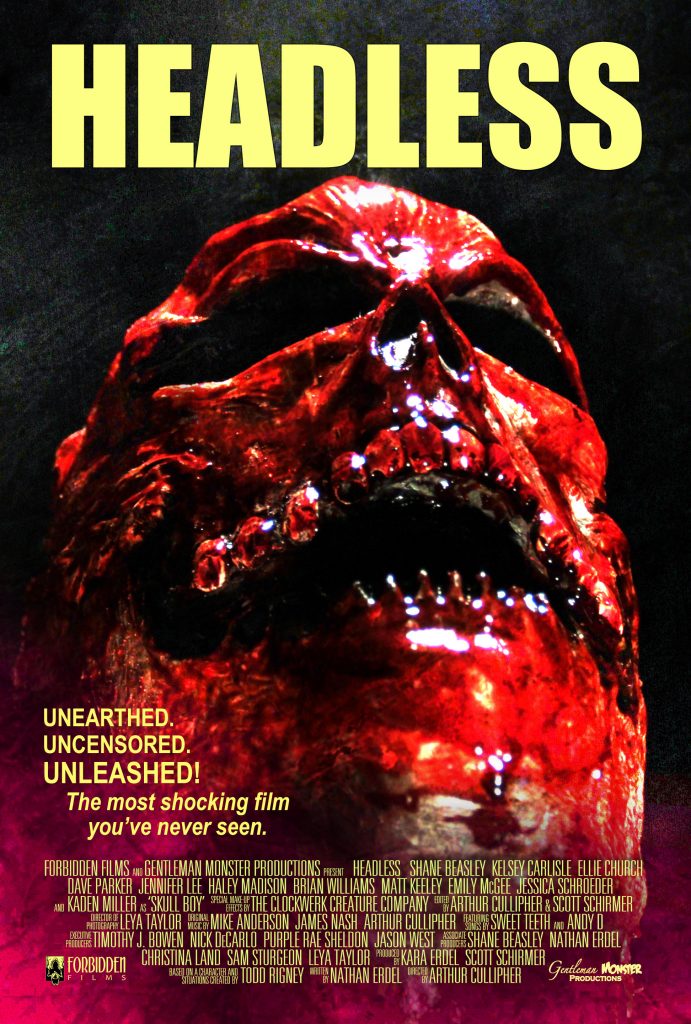
Headless isn’t really a spin-off of Found. It’s actually a movie within a movie that was popular enough to become its own feature. Headless appears as part of the plot in Found as a film Steve steals from the video store that serves as his inspirational “how-to” murder guide. A part of the fake feature is played in Found in a sequence that is definitely one of the more disturbing, and over the top, moments of the film. It goes past gooey, torture porn, and just dives headfirst into House of a 1000 Corpses territory.
The DVD and blu ray of Found features the full uncut version of Headless that appeared in the film, running at about 24 minutes. Fans, however, wanted more and in 2015, a full-length feature film based on the short was released and produced through a Kickstarter campaign. It’s a little hard to find now. It can be watched on YouTube and you can buy the DVD on Scott Schirmer’s website but aside from that, I don’t think it can be found anywhere else.
It isn’t the exact movie that Steve and Marty watched but it features the same character of the Masked Skeletal, once again played by Shane Beasley, doing what he does best. Going around decapitating young women. Headless is definitely for a select audience. The Terrifier crowd might get a real kick out of it. I personally disliked it because it was a nonstop gorefest that didn’t have much of a story aside from copying and pasting Ed Kemper’s biography into the screenplay.
There isn’t much of a plot. I actually found it quite boring, but that’s my own personal opinion, I’m sure there are many who would disagree. It tries to find a common ground between slasher and arthouse, revolving around the unnamed killer I refer to as the Masked Skeletal as he carries out his many grisly murders. Through flashbacks, we learn of the abuse he suffered at the hands of his mother and sister, who made him sleep in a dog cage that he continues to sleep in even as an adult. The abuse resulted in a hatred of women and a damaged psychosis that causes him to hallucinate a young boy with a skeleton head. The child, a possible representation for his stolen youth, directs him in his day to day life, including his many kills.
Headless is not something the average person would enjoy, not because it’s bloody but because it has almost no dialogue or character development and doesn’t follow the typical cinematic format. Imagine if Richard Rameriz or Kemper had a video camera. That’s what this is.
My favorite thing about Headless is the fake trailer that appears before the movie starts for a film called Wolf Baby, something that looks way more interesting than this.

Photos are property of Forbidden Films.
Related posts:
Rachel Roth is a writer who lives in South Florida. She has a degree in Writing Studies and a Certificate in Creative Writing, her work has appeared in several literary journals and anthologies. @WinterGreenRoth

You may like
We have come now to the finale of season four of The Boys. And while it didn’t have the literal blood fireworks I wanted, someone did get ripped in half in the air. So, that’s pretty close.
As a note, I will try to avoid spoilers as much as possible. This ending was a hell of a gut punch that should be experienced as blindly as possible. That being said, I will not be able to avoid spoilers and still give a full legitimate review. Proceed at your own risk.
The story
The main storyline for this episode is the attempted assassination of President-Elect Robert Singer. The Boys join forces with the Secret Service to protect him. But, as we learned last episode, Annie has been replaced with a shapeshifter. A shapeshifter that was welcome not just into Hughie’s anus, but into the protective bunker in which the President-Elect is hiding.
What worked
The first thing I want to discuss about this episode is the ending. But we need to do this carefully.
The important thing here is that the ending breaks your heart on so many levels. So many terrible things are happening to characters that it’s almost hard to keep track. And each moment is significant to each character.
I cannot give a specific example. But no matter who your favorite character is, you’re going to weep for them.
Unless your favorite character is Sage. And this is the next thing that made this episode so fantastic.
I don’t think I’m spoiling anything to say that Sage’s plans worked out exactly as she wanted them to. And she got exactly what she wanted.
What she wanted wasn’t power. It wasn’t money or fame or vengeance. It wasn’t to win the love of anyone. She just wanted to see if she could do it.
That is a terrific, terrifying motivation! Because all she wants is to play a massive game of chess with people as pieces. She doesn’t care about anyone. She just wants to see how many people she can manipulate. She just wants to set things on fire to see if she can.
Fantastic. A plus villain work.
The next thing I want to discuss is a cornerstone of the whole series.
The morality of The Boys shifts through the series. While it’s very much a battle to save the world from overpowered super monsters, it’s also a battle for the souls of our real heroes. And in that battle, there are two warring factors. We have Hughie, always trying to bring everyone up to a better level. And we have Butcher, who has no problem at all hitting rock bottom with a shovel in hand to do some more digging.
In this episode, we saw almost every member of The Boys challenged. Will they rise to their higher angels, or sink with their demons?
On a similar note, I am so glad that the writers kind of addressed my issues with Annie. They did this by having the shapeshifter get right into her face and accuse her of thinking that she’s better than everyone.
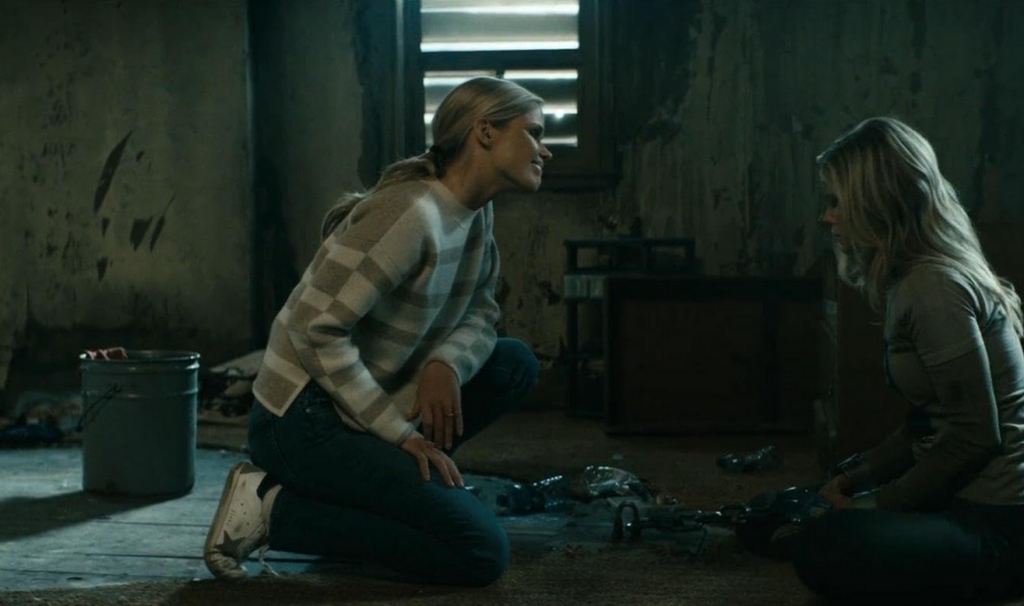
While that was devastating for the character, it was a little cathartic for those of us who felt like Annie was a little too good of a good guy.
What didn’t work
This is a small matter, but it is an issue that I want to address. After Annie finds out that Hughie slept with her doppelganger, she is furious at him.
In addition to this being unfair, it’s also a very cliche element to add. In almost every instance of a lookalike in fiction, there’s a moment where the love interest of the victim is fooled. Or almost fooled. And it’s always the same fight. It’s just played out and predictable. I’m just glad that it didn’t last very long.
Now that we’ve come to the end of the season, I can officially say that it was amazing. The story was deep and rich. The special effects were a stomach-turning good time. The character development was spot-on and satisfying. And, of course, it left me just about gagging to see what happens next. Unfortunately, it looks like we’ll have a bit of a wait. Because as of right now, the fifth season isn’t expected until 2026.

We’ve reached the second to last episode of The Boys, season four. And, as is appropriate for the penultimate episode of any show, things have to get a lot worse before they can get better.
Let’s discuss.
The story
Christmas is coming, and the whole world is getting ready. Ryan, despite being very clear that he didn’t want to appear on any TV shows or movies, has been strong-armed into participating in a Vought puppet Christmas special. He draws the line, though, when asked to sing about turning one’s parents in if they start talking about woke things.
Meanwhile, The Boys are trying to keep each other together. Butcher decides to take Sameer to the rest of the team. He also gets Frenchie out of prison, hoping they can make the Sup virus necessary to finally take down Homelander. Instead, this decision means disaster for one member of the team.
What worked
I first want to talk about Ryan’s speech near the end of the episode. Because it was exactly the moral of this whole story.
Ryan’s dad is a monster. His stepdad is also kind of a monster. But Ryan is a good kid. He cares about people, about family. And while he loves Homelander and Butcher, he doesn’t want to be like them.
Even better, this speech sounded like something a kid would say. Ryan didn’t open his mouth and start sounding like a college student all of a sudden. He sounds like a kid who misses his mom and wants to live up to the good standards she set for him. And I think that’s terrific.
Speaking of Homelander, he shot himself in the foot in this episode. I said earlier in the season that his hubris was going to be his downfall, and I was right. Without Sage, he just has the same weaknesses he’s always had. He’s going to fail because he just isn’t clever enough or patient enough to succeed.
Without Sage, I think a win is in the bag for The Boys. This isn’t to say that Homelander by himself isn’t dangerous. It’s just that he’s more like a wildfire than a controlled burn. He’s going to cause a lot of damage, but not get anything he wants out of it.
More’s the pity for him and everyone else who has to share his world.
Finally, I am thrilled with A-Train’s redemption story. I love that he wants to be a good person not to save himself, but to be a good person. His honest, pure and warm reaction to that little kid smiling at him in the last episode was heartwarming. It changed him in a moment, bringing to light a goodness that he’s been keeping under wraps for a long time.
This, along with Ryan’s courageous speech, proves once again what The Boys does so well. Yes, it’s gruesome. Yes, there’s blood and balls and batshit events. Yes, someone occasionally gets ripped in half. But there is a true human goodness in the story. One that we catch glimpses of. There are good people among the monsters. There is hope for redemption.
What didn’t work
Of course, so few things in this life are perfect, and this episode was no exception. For instance, I was irritated by the insinuation that Butcher cheated on his wife.
That just doesn’t make any sense. We’ve seen flashbacks of Billy and Becca. They were happy. He was happy. He was head over heels for her. And I don’t think it’s realistic or necessary for the character to throw in that he cheated. It does nothing to add to the story, it’s just a weird and offputting moment.
Doesn’t Butcher have enough to hate about himself? Can’t we just give him that at least he was a good husband?
Finally, I kind of hate that we ended up with Annie being caught. It’s just cliche, which is something I don’t normally say about this show. It feels lazy unless they do something very clever with it in the last episode. Which, I suppose, they might.
Next up is the season finale. And with this season being as insane as it has been, I’m expecting nothing short of bloody fireworks. And I mean literal fireworks of blood. At this point, would it surprise anyone?
 (4 / 5)
(4 / 5)
Episode six of The Boys was one of the most surprising episodes of the series so far. And that is certainly saying something. Because this season has so far been bonkers.
The story
Our episode today revolves around a party at Tek Knight’s lovely mansion. Yes, it does look just like Wayne Manor.
The Boys know that Tek Knight is working with Homelander on something, but they don’t know the details. So they decide to send Hughie in to bug the mansion.
Because that’s worked so well the other two times he’s tried to hide a bug!
It should surprise no one that this time goes no better. Hughie finds himself in Tek Knight’s basement. And by that I mean his BDSM dungeon.
Meanwhile, the party upstairs is no less disturbing. Homelander and Sage are trying to convince some well-off political donors to support a cue after the election. When pressed for details on his plan, Homelander freezes. He looks to Sage for help, but she wasn’t recently shot in the head and still in the junk food stage of her healing.
Fortunately, or unfortunately depending on your point of view, Neuman jumps in and saves the day.
What works
If I’m going to say one thing about this episode, it didn’t hold back at all. I didn’t expect them to show a character masturbating, sitting their bare behind on a cake, or spraying breastmilk into someone’s face. But every time I thought they’d cut the scene and let something be left to our imagination, they did not do that.
This is a dangerous move. Whenever you show the monster, you run the risk of them not being scary enough, or gross enough. As Stephen King says in Danse Macabre, to leave this sort of thing to the imagination if the reader makes things so much worse. So when they finally experience the monster, they might say that this isn’t so bad. It could have been so much worse.
But in this case, they managed to avoid that by making the scenes, especially the ones in Tek Knight’s dungeon, so much worse than I imagined it would be.
What doesn’t work
While this was a deeply disturbing episode in many ways, there was one really innocent and sweet moment.
And yes, I did have a problem with it.
Confronted by Firecracker, Annie decides to apologize for spreading rumors about her when they were kids. She tells her that she is genuinely sorry.
And I believe her. I don’t think Firecracker did, but I did.
So why is this an issue? Because I’m starting to think that Annie is maybe too nice. She is too good.
I know that Annie is our good guy. But every one of the other good guys has flaws. Hughie let his pride get in the way and took Temp V. MM hid himself from his daughter instead of teaching her to work through her emotions. Kimiko is far too closed off and has a hard time trusting others. Frenchie numbs himself with drugs. And well, what hasn’t Butcher done?
It is unrealistic that Annie is just so kind and so flawless. We all have shadows in our personalities. We all have weaknesses, we all mess up. We all do things we wish we could take back. The fact that Annie doesn’t seem to have anything like that is not just unrealistic. It’s infantilizing.
Give her some deep dark secrets. Give her something real to regret.
This was a shocking episode, even for someone fairly jaded like me. I wasn’t expecting the sort of weird sexual depravity, though I guess maybe I should have seen it coming. It was dark, upsetting, tense, and funny as hell. And with just two episodes left in the season, I can imagine the stakes are only going to get higher.
 (4 / 5)
(4 / 5)
By the way, if you like my writing you can get my short story, Man In The Woods, on Smashwords and Amazon.

